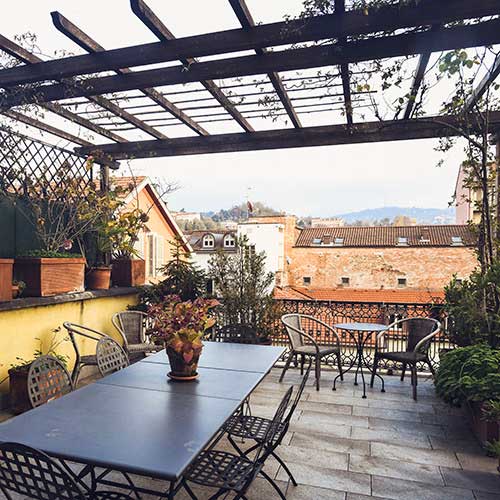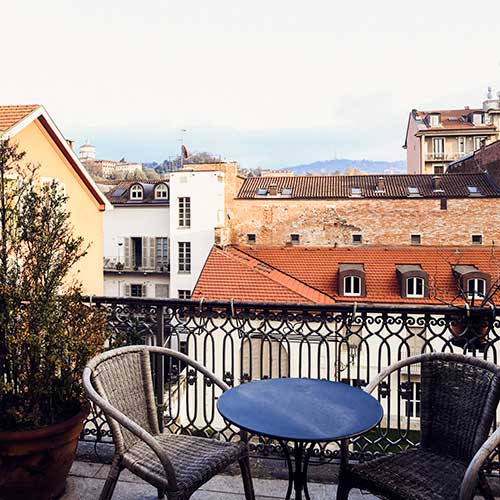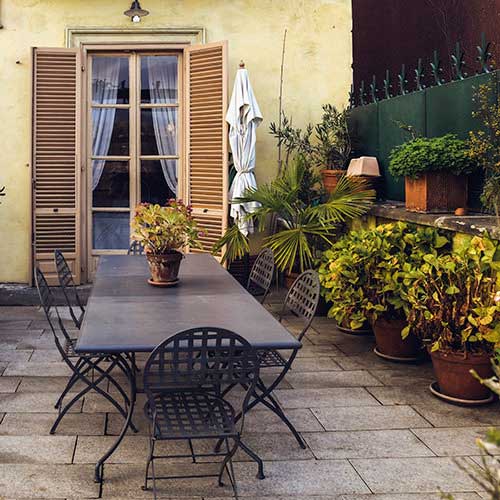Project Description
_Via della Rocca
The high walls that surround the large courtyard of this villa seem to want to protect and preserve it as is done with objects of great value. This sentiment is in line with the site where the villa is located: one of the most prestigious streets in Turin, Via della Rocca, refined to the point of being called even today the “Via dei Nobili”. A street in which art galleries and historic aristocratic residences follow one another.
Before becoming what it is today however, Via della Rocca served a role for the military and strategic functions of the city structure. In fact, in the Middle Ages Via della Rocca housed the Bastione della Rocca, a modestly sized fort which, thanks to its lookout tower, made it possible to spot enemies from great distances.
The military purposes were then joined with those of public safety with the construction of numerous other towers between the tenth and fifteenth centuries that served to signal the onset of fire in the city; a fundamental function for that period given that the vast majority of the houses were mainly built of wood.
A street that in the past also gave its contribution to the productive element of the city, hosting numerous mills that whose mechanisms were operated by exploiting the currents of the river Po.
The high walls that surround the large courtyard of this villa seem to want to protect and preserve it as is done with objects of great value. This sentiment is in line with the site where the villa is located: one of the most prestigious streets in Turin, refined to the point of being called even today the “Via dei Nobili”. A street in which art galleries and historic aristocratic residences follow one another.
Before becoming what it is today however, the street served a role for the military and strategic functions of the city structure. In fact, in the Middle Ages it housed the Bastione della Rocca, a modestly sized fort which, thanks to its lookout tower, made it possible to spot enemies from great distances.
The military purposes were then joined with those of public safety with the construction of numerous other towers between the tenth and fifteenth centuries that served to signal the onset of fire in the city; a fundamental function for that period given that the vast majority of the houses were mainly built of wood.
A street that in the past also gave its contribution to the productive element of the city, hosting numerous mills that whose mechanisms were operated by exploiting the currents of the river Po.



